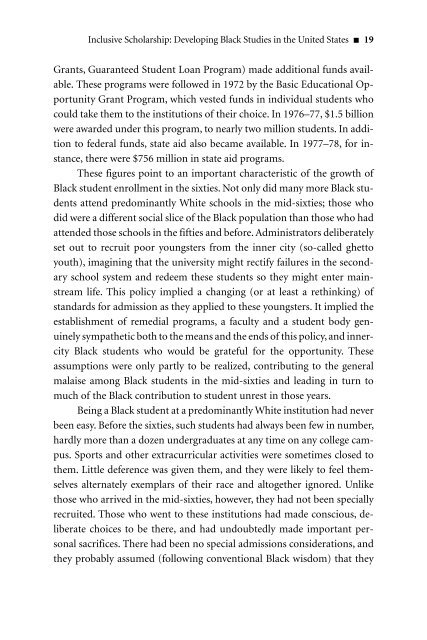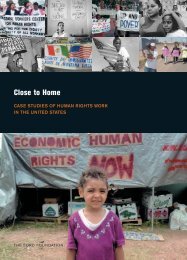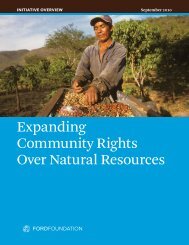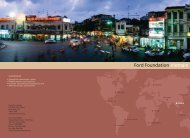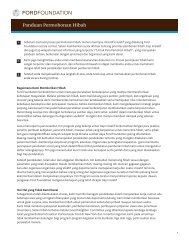Inclusive Scholarship: Developing Black Studies - Ford Foundation
Inclusive Scholarship: Developing Black Studies - Ford Foundation
Inclusive Scholarship: Developing Black Studies - Ford Foundation
You also want an ePaper? Increase the reach of your titles
YUMPU automatically turns print PDFs into web optimized ePapers that Google loves.
<strong>Inclusive</strong> <strong>Scholarship</strong>: <strong>Developing</strong> <strong>Black</strong> <strong>Studies</strong> in the United States 19<br />
Grants, Guaranteed Student Loan Program) made additional funds available.<br />
These programs were followed in 1972 by the Basic Educational Opportunity<br />
Grant Program, which vested funds in individual students who<br />
could take them to the institutions of their choice. In 1976–77, $1.5 billion<br />
were awarded under this program, to nearly two million students. In addition<br />
to federal funds, state aid also became available. In 1977–78, for instance,<br />
there were $756 million in state aid programs.<br />
These figures point to an important characteristic of the growth of<br />
<strong>Black</strong> student enrollment in the sixties. Not only did many more <strong>Black</strong> students<br />
attend predominantly White schools in the mid-sixties; those who<br />
did were a different social slice of the <strong>Black</strong> population than those who had<br />
attended those schools in the fifties and before. Administrators deliberately<br />
set out to recruit poor youngsters from the inner city (so-called ghetto<br />
youth), imagining that the university might rectify failures in the secondary<br />
school system and redeem these students so they might enter mainstream<br />
life. This policy implied a changing (or at least a rethinking) of<br />
standards for admission as they applied to these youngsters. It implied the<br />
establishment of remedial programs, a faculty and a student body genuinely<br />
sympathetic both to the means and the ends of this policy, and innercity<br />
<strong>Black</strong> students who would be grateful for the opportunity. These<br />
assumptions were only partly to be realized, contributing to the general<br />
malaise among <strong>Black</strong> students in the mid-sixties and leading in turn to<br />
much of the <strong>Black</strong> contribution to student unrest in those years.<br />
Being a <strong>Black</strong> student at a predominantly White institution had never<br />
been easy. Before the sixties, such students had always been few in number,<br />
hardly more than a dozen undergraduates at any time on any college campus.<br />
Sports and other extracurricular activities were sometimes closed to<br />
them. Little deference was given them, and they were likely to feel themselves<br />
alternately exemplars of their race and altogether ignored. Unlike<br />
those who arrived in the mid-sixties, however, they had not been specially<br />
recruited. Those who went to these institutions had made conscious, deliberate<br />
choices to be there, and had undoubtedly made important personal<br />
sacrifices. There had been no special admissions considerations, and<br />
they probably assumed (following conventional <strong>Black</strong> wisdom) that they


